
My eye was drawn to an article in the Guardian Weekly by Amelia Tait on the commercial production of maggots inter alia. Apparently, There is a maggot farm in Wales, which sends 600,000 packaged live maggots every year to various areas of the NHS and other health care providers. As Tait noted: “It is believed that ancient aboriginal tribes used maggots to treat the wounded and some academics argue that the practice ‘dates back to the beginnings of civilisation’. Hundreds of years later, these superbugs are now used to fight superbugs. In an age of growing antibiotic resistance, maggots are an alternative to modern medicine, as they help to fight infection by consuming dead tissue and bacteria. Between 2007 and 2019, the number of NHS patients treated with maggots increased by 47%”.
My encounter with the medicinal effect of maggots came very early in my medical career when I was working in the emergency department of a then outer Melbourne suburban hospital. I was called to see a man who had been found in a semi-conscious state in the bush somewhere in the nearby hills. He had been there for well over 24 hours as I was told, but actually how long was never clear; and he was a man who was sleeping rough anyway. When I was introduced to him, he was conscious -surprisingly alert.
When I moved his tangled hair, still matted with a mixture of blood and mud, I could see the white surface of the skull where the tissue had been removed. It was a little taken aback by the mass of white maggots wriggling on the cranial surface. I tried to look unconcerned seeing maggots since I was being accompanied by staff in the treatment bay with a penchant not to touch the patient. They were closely watching my reaction, but I just asked for an instrument to remove them. As I bent over with a pair of tweezers, I sensed feelings of revulsion beside me. Yet there was a wound to clean and there was no need of debridement. Still, the maggots were reluctant to leave their succulent eatery. It took me a considerable time to remove the bulk of the maggots before the patient was transferred to the ward. I heard there were maggots dropping out of a convenient hole in the galeal aponeurosis for the next week. It caused some unusual form of barrier nursing, when a maggot unexpectedly dropped onto a nursing arm. Let me say I did not follow him up, but he must have been able to resume his wanderings at some time, maggot free.
Maggots have many uses, and one is their use as live bait in fishing if you’ve the personality to thread them onto little hooks and then attach a berley container, shaped like a ski lift gondola packed with more maggots. I’ll leave that piscatorial maggotry to others.
There are thus providers – the insect farmers. The article was almost breathless in describing Olympia Yarger, ACT Person of the Year 2023, in creating new jobs almost as fast as she’s breeding maggots. She is described as an insect breeding pioneer. Her Canberra-based food-waste-management “start-up”, Goterra, breeds maggots and houses them in internet-connected, remote-controlled shipping containers into which customers dump their food waste. When the insects have eaten through the waste, they’re harvested and sold to farms for use as animal food.
Finally, “white maggot” has long been a term of endearment heard bellowed around Australian football grounds, but recently not so much used now when the umpires are dressed in yellow shirts and coloured shorts.
NSW Elections
A few comments, which immediately occurred to me.
Number one: John Howard is not an electoral asset. Repeat after me: John Howard is not an electoral asset. He emotes sagely after the election as he closes the stable door. So, when he comes calling in the future, resist the urge to disinter him.

Number two: Chris Minns, the Premier-elect, has an interesting history. His only real job has been as a house husband; otherwise he is the successful detritus of the Catholic right, an essential conservative who, judging from his history, would have been comfortable with Bob Santamaria and his “Movement”. He has not been deterred from rebuff. His adherence or not to a strict Catholicism, reflected in the conservative diocese with an archbishop with his shock-trooper Maronite brigade trying to repel most social changes, will be a matter to see in his future behaviour as Premier. The Sydney diocese seems immune from any of the Vatican reforms being introduced by Pope Francis.
The other worrying matter is his failure to hold the gambling industry to account. Minns has a limp-wristed response in only setting up some half-baked trial. The challenge is to stop this insidious tax on the most vulnerable through the poker machine and defying the “joy-boyo” culture which festers in rugby league clubs and horse racing.
In an acknowledged success story, his wife, Anna has made her name and fortune in her Australian franchise of Terracycle, a waste management business founded in New Jersey. Some symbolism here. But there is more, she has started a new company, Boomerang Labs, which spruiks that it is the first circular economy accelerator, “by finding and helping grow the ideas and talents of entrepreneurs and small businesses that have circular systems and solutions at the heart of their businesses”. It sounds that this is an interesting family, given that their social presence is interlaced with three sons, seemingly well-spaced. But then the Minns family exudes a calm sense of order, despite the odd aberrant T-shirt.
Southern Lights
It is Friday evening. The Bureau of Meteorology has issued a space weather forecast indicating the prospect of seeing an Aurora Australis across the whole of Tasmania are excellent tonight. The optimal time in the Southern Hemisphere for viewing this phenomenon is between March and September when the Earth’s magnetic field is best oriented to interact with solar winds. Yes, the television transmission is being interrupted so the electromagnetic gremlins are at work. Then suddenly in Brisbane, the lights have gone out in the last quarter of the Melbourne versus Brisbane football match. A power outage at the Gabba is the signage along the bottom of the screen. Surely the gremlins have not tracked northwards. Talk about outage, the outrage simmers just below the service among the TV commentators.

My wife has returned from her perch three minutes’ drive away at Lettes Bay. She has had a clear view to the South. This following night there is a cloud bank to the South obscuring the Aurora, but there is still a red glow visible above the clouds. It is a pity because it is a dark night, and there have been nights where the view has been unobstructed as shown in the accompanying pictures.
Saturday morning, and the Aurora images were rife in the media, sent from all over Tasmania, where there had been no cloud interference. Every colour of the visible spectrum could be seen in these images. The images reflect a show only Mother Nature can show when she is at the height of her powers, The Kp-index describes the disturbance of the Earth’s magnetic field caused by the solar wind. The faster the solar wind blows, the greater the turbulence. The index ranges from 0 to 9, the latter figure denoting that an intense geomagnetic storm is under way. Last night it was an 8 here – highly unusual. There were people on the mainland wanting to come down, but it is a challenge to the tourist industry to catalogue these times, because as with all natural space phenomena there is always a degree of unpredictability – you need both an aurora and a clear night.
When I was in Iceland, Aurora Borealis bulletins were released daily at the hotel where I was staying. The hotel was situated well away from the lights of Reykjavik, but nonetheless to see the Northern Lights in Iceland does not mean long treks in the snow as occurs in Norway or Alaska, accompanied by some celebrity. For a time, it was such an accomplishment. In Iceland, as I have noticed before, if one is booked into the right room, the lazy way of seeing the Aurora Borealis is to stretch, sit up, push your nose against the windowpane – and it may be there. But there is something about standing out in the freezing cold to watch Aurora in her many veils dancing on the horizon, which watching from the warmth of your hotel room can never match.
By the way, the football match finally finished with three of the four light towers in operation. Twelve minutes had to be played, and Brisbane won – just.
Ramadan has Come
I was attracted by this article from the Boston Globe, which sets out what is available after dark during Ramadan. I remember being in Turkey during Ramadan. The early morning banging on a drum woke us up, but unlike the Moslem population, we turned over and went back to sleep. When we reflected back on our time as Christians at a time of Ramadan in a Moslem country, the only real privation was not being able to order alcohol with our meal.
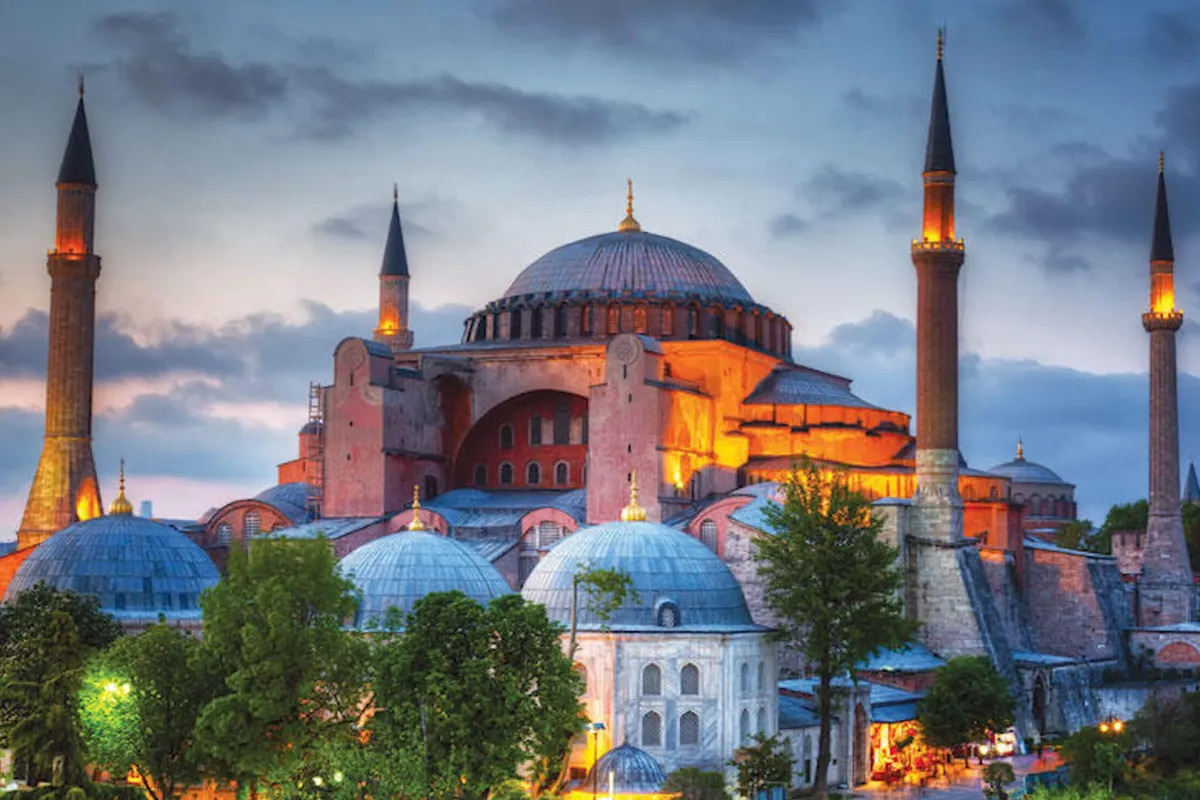
Whilst in Istanbul, we were fortunate to visit the Hagia Sophia in the early morning before the crowds arrived. This is one of those buildings which has remained while Byzantium became Constantinople and then Istanbul. We were lucky to visit while it was a museum; and as such the Hagia threw out a sense of ecumenical tolerance.
![]() When we roamed the upper gallery we very much alone. We were able to contemplate the icons of Christ and Mary holding the Infant Jesus, which had been covered over for many centuries but must have been painted soon after the Emperor completed the building in 538 – and had survived. This Justinian cathedral became a mosque following the Islamic conquest of Constantinople in 1453, and remained a mosque until Kemal Atatürk changed its role from a closed place of worship for Muslims to a museum. Predictably, Erdogan has turned it back into a mosque – and the Christian symbolism presumably lime-washed.
When we roamed the upper gallery we very much alone. We were able to contemplate the icons of Christ and Mary holding the Infant Jesus, which had been covered over for many centuries but must have been painted soon after the Emperor completed the building in 538 – and had survived. This Justinian cathedral became a mosque following the Islamic conquest of Constantinople in 1453, and remained a mosque until Kemal Atatürk changed its role from a closed place of worship for Muslims to a museum. Predictably, Erdogan has turned it back into a mosque – and the Christian symbolism presumably lime-washed.
Now Ramadan in Australia. There were reports of Muslim doctors being asked whether they were ill because they were not eating food nor drinking during the day. After several reports, I thought it would be useful if the health services where I worked set up an instructional lecture on Ramadan and the reasons for it, which in turn plumbed the core of the Islamic faith. One of the young female interns, came to our attention because of her mixture of piety and wanting to achieve perfection. This led to behaviour which clashed with the health service staff initially. She needed counselling early on in her internship but her quest for perfection proved appropriate when I suggested she might prepare a presentation on Ramadan. She agreed and it proved extremely popular because she revealed herself as a storyteller and one who had an ability to impart her piety in very simple terms. It had an impact on her colleagues, and her devotion to Islam made her a person who epitomised the very best of Islam. In the end, this work helped her professional relationships.
To me as a Christian, I’ve never been much for other religions – other than recognition that the very best of them have been a massive contributor to the world. After all, without Islamic mathematicians, the World would not have any concept of zero.
But then again, my knowledge of Islam remains scant. I have thumbed through the Qur’an, but the Bible is difficult enough, given the sense of craziness which some of the text creates in my mind.
Comparing Holy Script is one route to better understanding. Customs are also informative to reproduce this article from The Boston Globe (albeit lightly edited) indicating what Muslims consume after dark during Ramadan, in Boston at least.
The local Muslim community has roots in many cultures — 64 nationalities are represented among the 1,500-plus congregants of the Islamic Society of Boston, for example. But whatever dishes appear at iftar, the Ramadan fast is always broken in the same way: with dates, the food with which the Prophet Muhammad is said to have broken his own fast.
Ramadan began Wednesday evening, March 22 with Muslims fasting from dawn until dusk during the holy month, a time of prayer, reflection, service, and charity. When the sun sets, customers might break the fast at home with family and friends, at the mosque, or at one of the area’s diverse halal restaurants, some of which serve special meals for the occasion. {Ramadan ends on Friday April 21}
At Peshawri Kebabs in Waltham, patrons can climb a few stairs to a nook lined with cushions, carpets, and tapestries to share potato-filled samosas; chapli kebabs, flattened, minced patties flavoured with herbs and spices; the mutton stew nihari; and other specialties of Peshawar, in Pakistan near the Afghan border.
In the Fenway, Sufra bakes manousheh, Lebanese flatbreads, to order, topping them with the spice blend za’atar, cheese, ground beef, and more. Hummus, grape leaves, fattoush salad, and chicken shawarma are served with pickles, garlic sauce, house-made pita.
Lazuri Cafe in Allston serves kahvalti tabagi — Turkish breakfast plates laden with eggs, cheese, olives, salads, bread, and sauces — plus stuffed eggplant, the flatbreads pide, Iskender and yogurtlu kebabs, and many other specialties of Turkey.
“That’s a tradition for all Muslims,” says Rokeya Chowdhury, who runs Shanti in Cambridge, Dorchester, and Roslindale, as well as Dudley Cafe in Roxbury, with husband Solmon. “That’s a must. Dates have to be present at that table. They are the first thing you consume after water.”
The fruits are included in the meals Shanti puts together for iftar, the breaking of the fast. This is the second year the Indian restaurants have offered iftar meals. “My husband and I observe Ramadan,” Chowdhury says. “This is our offering to people who may or may not have families here, or even if they have families, we’re all busy. It’s our little part in offering it to people who are observing this, as well as sharing it with others who may not partake in it but could still experience the food.”
Shanti’s Iftar Box, available March 22 to April 20, includes kala chana, black chickpeas with potatoes, onions, and spices; piaju bhaji, lentil fritters; vegetable biryani; traditional sweets — and, of course, dates. Friday through Sunday during Ramadan, Shanti also offers haleem, a thick, savory stew of goat, cracked wheat, lentils, and spices. “It’s a comfort food similar to a porridge,” she says. “You simmer it for hours as the meat and lentils break down. It’s a dish traditionally you would see in South Asia around Ramadan a lot. It’s near and dear to our heart, so we really wanted to offer it to others as well.”
Yahya Noor, owner of Tawakal Halal Cafe in East Boston, describes a similar dish made with oats that is traditional for breaking the fast in Somalia, the country his family left when he was a young boy. “It’s sweet, it’s very savory, it’s pretty much delicious,” he said. “That’s something we grew up on. It has a lot of protein. It was almost like a poor man’s food. We also make drinks — passionfruit or mango or avocado — we usually make smoothies with that.”
During Ramadan, in addition to the regular menu, Tawakal will add things like a light breakfast that includes a few dates, tea or coffee, sambusas, and a kebab. “It’s a lighter way to start,” Noor says. “Everything becomes a reverse during Ramadan. We break fast at night.” Each year, the restaurant also approaches area mosques, offering its services for iftar. “A lot of young single guys, people who don’t cook, people who are working, they depend on going to the mosques to break fast.”
To everyone who comes into the restaurant after fasting, Tawakal offers dates. “It just brings an extra good feeling,” Noor says.
Boston Kebab serves a menu which includes a lighter iftar course of olives and the stuffed Turkish pastry borek for breaking the fast before returning for more prayer. Then there’s a heartier meal that includes lentil soup, salads and appetizers, a plate of mixed kebabs or other daily specials, baklava, and more.
When the sun goes down at Bab Al-Yemen, the buffet begins: Come for the sambusas, stay for the Yemeni honeycomb bread, stuffed with cheese and soaked in syrup. “Some people go to the mosque and some people go to the restaurant” to break their fast, says owner Ahmed Mahmood. “We’re kind of the only Yemeni cuisine in the area, and it makes it an exotic thing.”

The Kenmore Square restaurant is offering a rotating smorgasbord all month long: dates, soup, bread, appetizers, spreads, salads, four main courses (one lamb, one chicken, one seafood, one vegetarian), and a variety of desserts, fruit, and cold drinks.
Reservations are required. They weren’t last year. “It was mayhem,” says Mahmood with a laugh. “We learned a lot from that.”
The buffet begins at 7 p.m., whether customers have been fasting or not.
“Nobody will eat until sundown,” Mahmood says. “But it’s open to everyone. We welcome everyone.”
The Deciduous Australian
This is our last week at our Tasmanian property. As we walk down the pathway where the tangle of tea trees has largely been removed, there was revealed a slender tree with small, saw-toothed glistening green leaves, some of the leaves are brown.
I always love the autumnal glow, the flashes of red, yellow, and brown. Having once followed the Fall-line in New England, it is an experience expected where there are stands of exotic trees. Tasmania is no exception.
My wife walked in, having taken a small cutting from a tree which I initially thought to be a specimen from the only native deciduous tree species in Tasmania, and the only cold-climate winter-deciduous tree species in Australia.
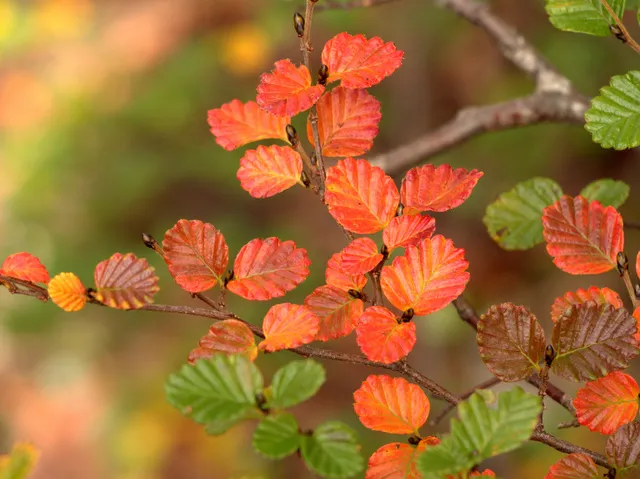
The Nothofagus gunnii is a compact alpine deciduous beech tree, believed to have been in Tasmania some say, for 40 million years. As those familiar with Tasmanian South-west, there is a belief some of the forests may have existed when the dinosaurs walked the Earth. But this is a flora which has been very little disturbed by human depredations. Strangely, Australia has relatively few native deciduous trees and this particular beech is the only one that loses its leaves in autumn. It grows very slowly and fire will permanently destroy it.

But alas, our discovery was of Nothofagus cunninghamii, the myrtle beech, which is not deciduous but has foliage superficially similar to that of its relative, Nothofagus gunnii. When Nothofagus cunninghamii has brown foliage, it is not because the leaves are ageing, rather that the leaves are young. Yes, Nature has her own paradoxes.
Mouse Guest Whisper
Despite a fondness for a mouse-sized macchiato every morning, I never aspired to own a coffee machine (apart from their size, which is not compatible with a mousehole-sized household). Visits to a well-known coffee emporium in downtown Leichhardt, Sydney’s little Italy, always showed the downside of coffee machine ownership – those machines all seemed to break down and join a very lengthy repair queue that snaked off into the distance, seemingly never diminishing.
So, I was interested in a tale from a coffee man in George Town Tasmania, Australia’s third oldest European settlement, that he was never concerned about the growing number of coffee machine owners. Every year, straight after Christmas, his coffee sales would drop off, but by March, like clockwork, they were all back … coffee machine owners, he said, can’t be bothered to look after their macchiato makers and so they would start to make “sad” coffee and would all come back to his coffee shop.
He had a particular claim to fame for a small-town coffee shop – he owned one of only two vintage Rancilio espresso machines in Tasmania, perhaps the whole country – a gold machine with a flying eagle on top. Personally, I would have thought a flying mouse more appropriate, but I kept that thought to my mouse guest whisper.
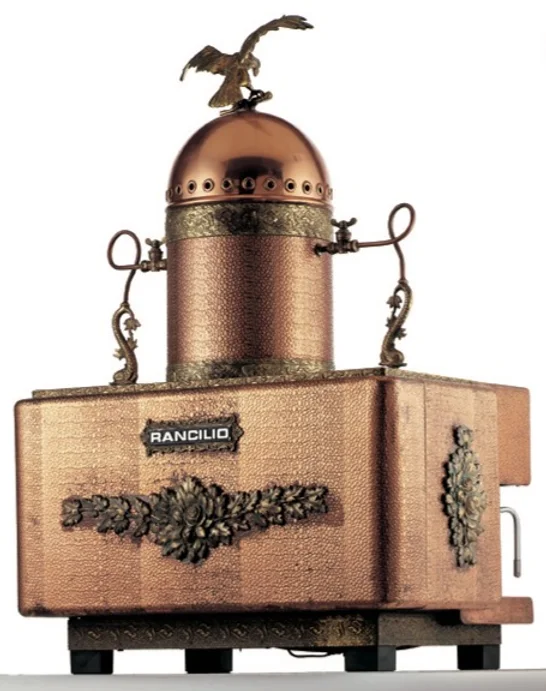

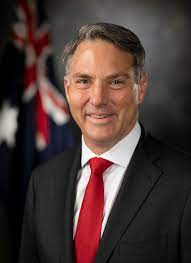

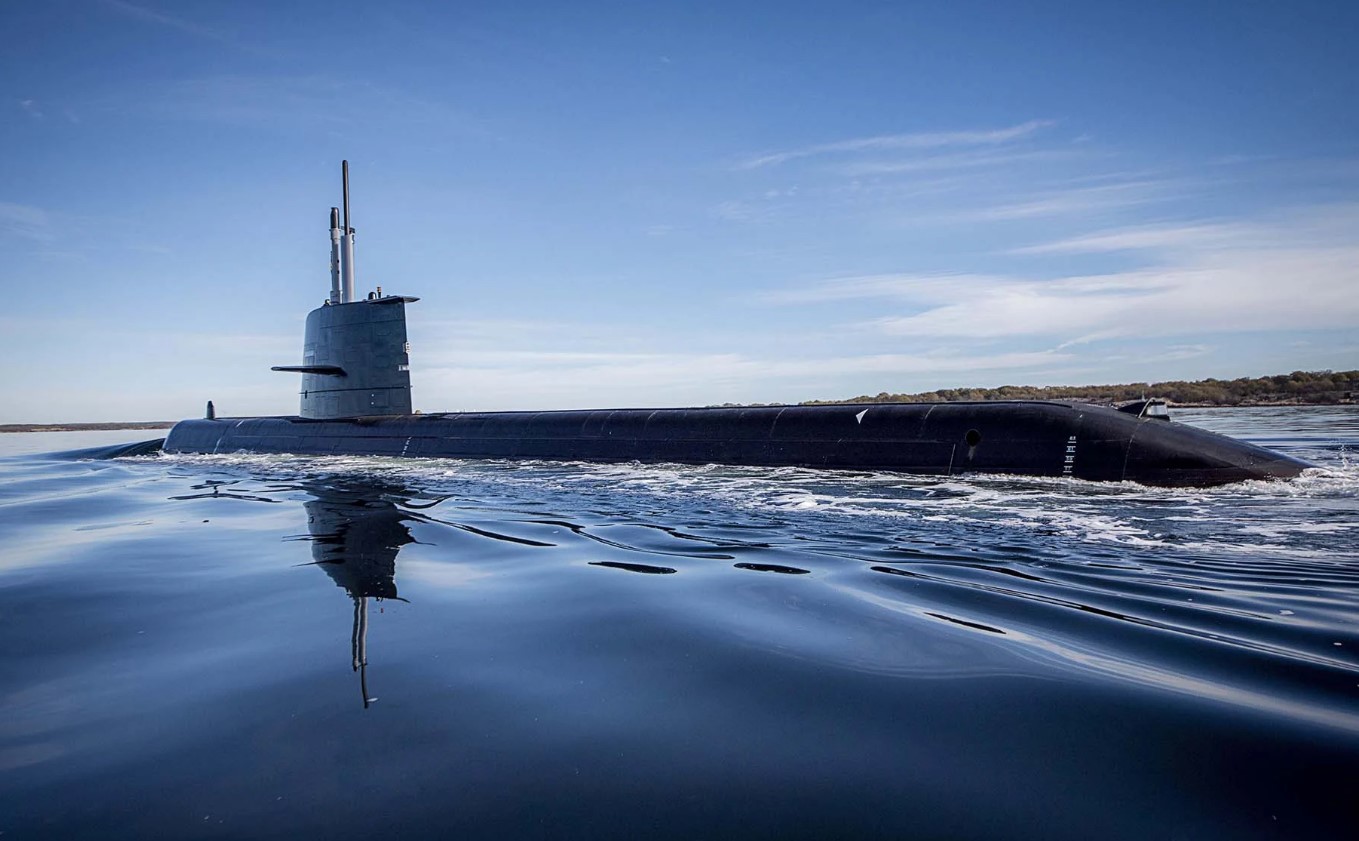
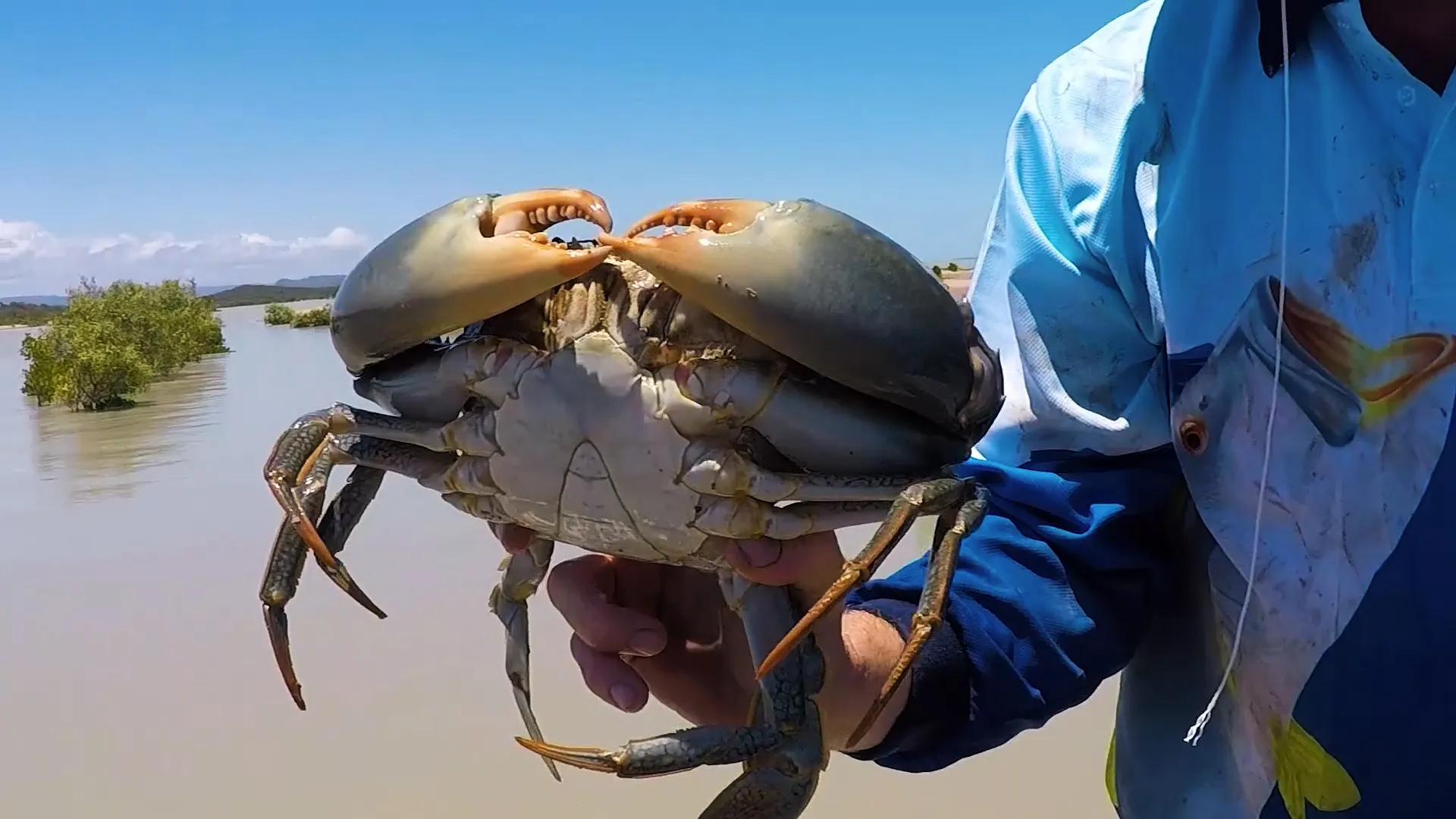 This mud crab had just been caught and dropped off at the café. I don’t know whether it was the only one, but I doubt whether I have ever seen one bigger. Even though I had actually cooked my own earlier in the decade, there was something about this mud crab feast which made it special. Unfortunately, with time, the wild crustacea and fish are increasingly a product of farming rather than being gathered from the wild. Mud crab farming is very popular in some Asian countries – Bangladesh, India, Thailand, Philippines. Mud crab is in huge demand, with equally huge prices in the international market, and thus they have mostly lost that uniqueness which we experienced one night in Mackay.
This mud crab had just been caught and dropped off at the café. I don’t know whether it was the only one, but I doubt whether I have ever seen one bigger. Even though I had actually cooked my own earlier in the decade, there was something about this mud crab feast which made it special. Unfortunately, with time, the wild crustacea and fish are increasingly a product of farming rather than being gathered from the wild. Mud crab farming is very popular in some Asian countries – Bangladesh, India, Thailand, Philippines. Mud crab is in huge demand, with equally huge prices in the international market, and thus they have mostly lost that uniqueness which we experienced one night in Mackay.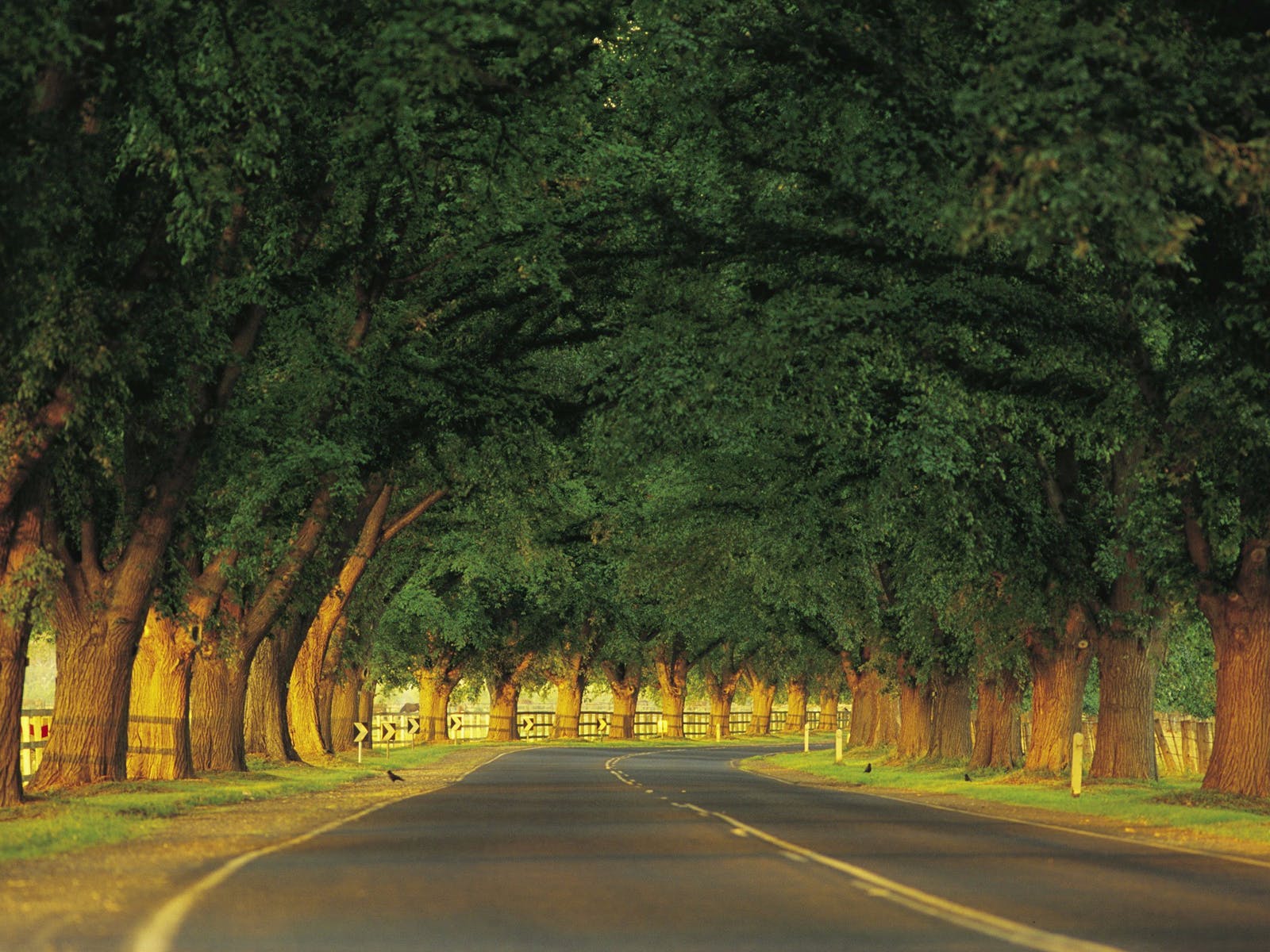


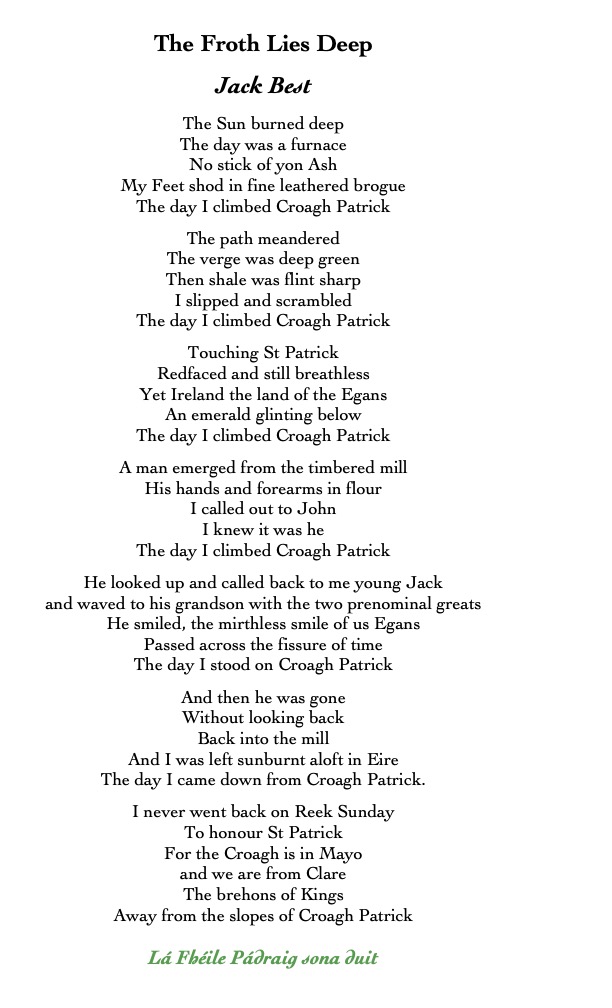

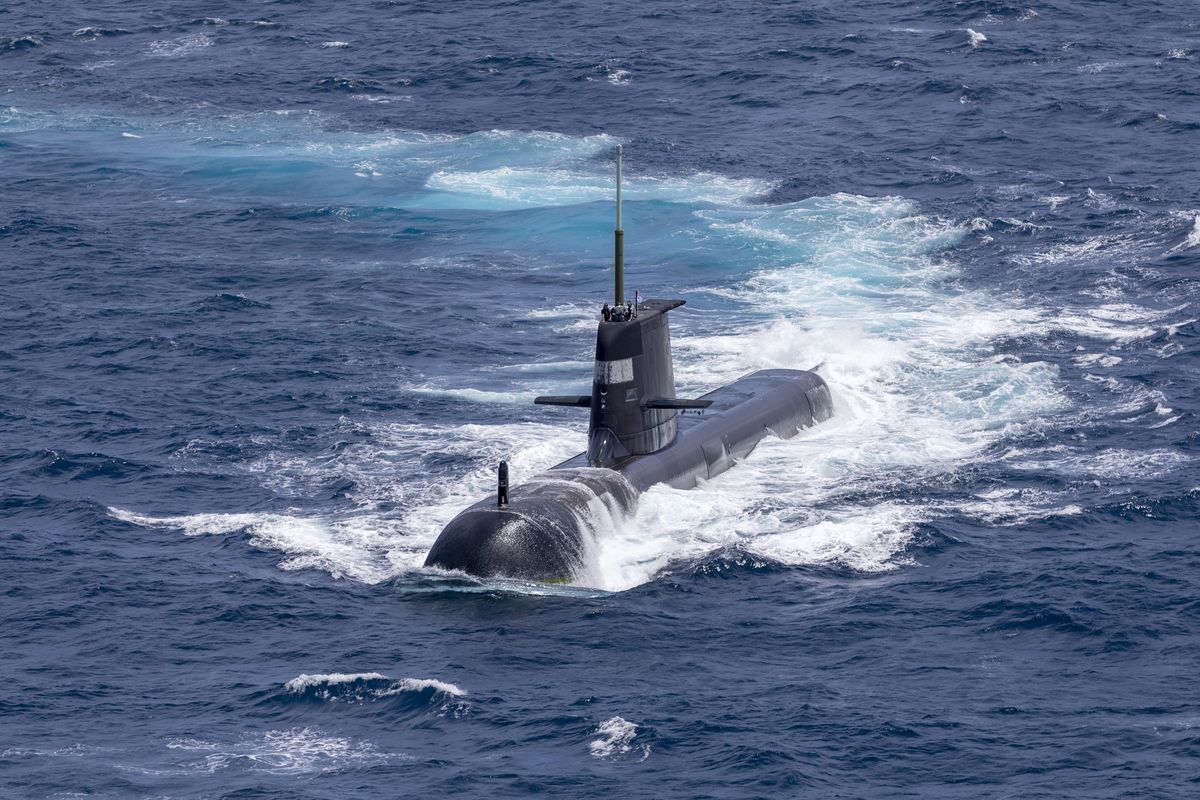
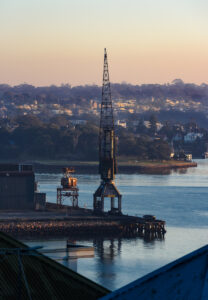



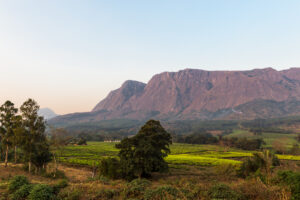
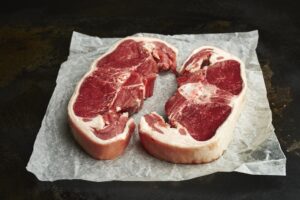
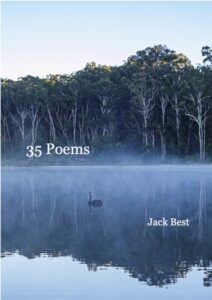
 Our kitchen benchtop is Corian, a synthetic material composed of acrylic polymers and an aluminon trihydrate extracted from bauxite. Marble too has negligible silica, but natural granite and its synthetic offshoot Caesarstone has a variable amount up to 90 per cent silica. Corian is cheaper, but not so resistant to stains and chipping apparently as Caesarstone.
Our kitchen benchtop is Corian, a synthetic material composed of acrylic polymers and an aluminon trihydrate extracted from bauxite. Marble too has negligible silica, but natural granite and its synthetic offshoot Caesarstone has a variable amount up to 90 per cent silica. Corian is cheaper, but not so resistant to stains and chipping apparently as Caesarstone.
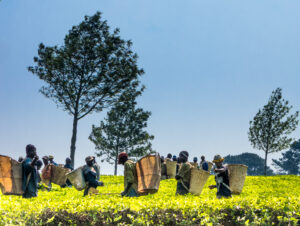 After the First World War a Scot called McLean Kay set up a tea plantation of nearly 900 hectares in Southern Malawi. This estate is called Satemwa, in the centre of which is Huntington House, the residence of the Kays. We spend a couple of nights there. It is not the main tea picking season, but we pass a line of men plucking tea leaves and placing them in shoulder baskets. Here both men and women share the load, unlike earlier in the year, where I had seen in Sri Lanka near Kandy tea leaf being picked by women with their baskets supported by a headband around their foreheads. Here the baskets were supported by the shoulders and the Malawi terraces were not the precipices of the Sri Lanka tea plantations where goats, let alone women with heavy baskets, would be hard pressed to cling. Malawi was way more considerate in the way the tea had been planted for the workers.
After the First World War a Scot called McLean Kay set up a tea plantation of nearly 900 hectares in Southern Malawi. This estate is called Satemwa, in the centre of which is Huntington House, the residence of the Kays. We spend a couple of nights there. It is not the main tea picking season, but we pass a line of men plucking tea leaves and placing them in shoulder baskets. Here both men and women share the load, unlike earlier in the year, where I had seen in Sri Lanka near Kandy tea leaf being picked by women with their baskets supported by a headband around their foreheads. Here the baskets were supported by the shoulders and the Malawi terraces were not the precipices of the Sri Lanka tea plantations where goats, let alone women with heavy baskets, would be hard pressed to cling. Malawi was way more considerate in the way the tea had been planted for the workers.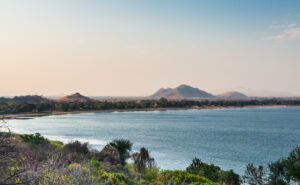

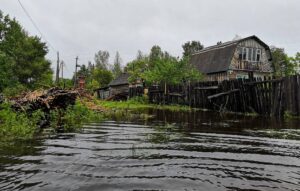

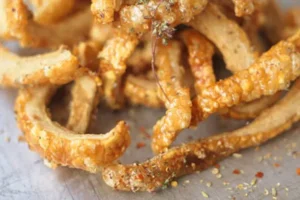 History does not celebrate the first skin-eaters, cultures around the world now enjoy skin recipes — whether Canadian scrunchions (pork rind), Indonesian krupuk kulit (beef skin), Jewish gribenes (chicken or goose skin cracklings with fried onions), Mexican cueritos (pork rind), Slavic cvarci (pork crackling) or Vietnamese tóp mo (fried pork fat).
History does not celebrate the first skin-eaters, cultures around the world now enjoy skin recipes — whether Canadian scrunchions (pork rind), Indonesian krupuk kulit (beef skin), Jewish gribenes (chicken or goose skin cracklings with fried onions), Mexican cueritos (pork rind), Slavic cvarci (pork crackling) or Vietnamese tóp mo (fried pork fat). 
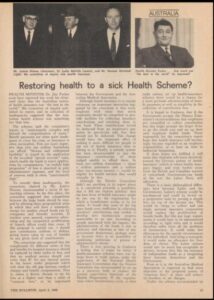
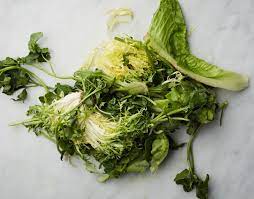 Meanwhile, the AMA sends out media releases printed on warm lettuce leaves.
Meanwhile, the AMA sends out media releases printed on warm lettuce leaves.

 You drive along the winding road South from Hobart into the Land of the Scarecrows. It is a picturesque drive through small villages and past farms. There is a collage of primary produce outlets and markets along the way. Fruit and vegetables are fresh; the taste tells me so. Tomatoes straight off the vine; wonderfully variegated beetroot and radishes; home to stone fruit and once where apple orchards and hop field dominated, now there are cherry trees covered in netting, and at the end of summer the trees are showing exhaustion after bountiful crops. This is the Huon Valley.
You drive along the winding road South from Hobart into the Land of the Scarecrows. It is a picturesque drive through small villages and past farms. There is a collage of primary produce outlets and markets along the way. Fruit and vegetables are fresh; the taste tells me so. Tomatoes straight off the vine; wonderfully variegated beetroot and radishes; home to stone fruit and once where apple orchards and hop field dominated, now there are cherry trees covered in netting, and at the end of summer the trees are showing exhaustion after bountiful crops. This is the Huon Valley.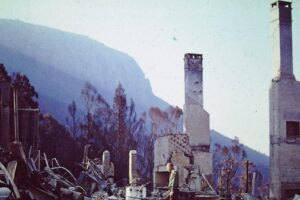 On 7 February 1967 Southern Tasmania was engulfed in fires, an event which came to be known as the Black Tuesday bushfires. They were the most deadly bushfires that Tasmania has ever experienced, leaving 62 people dead, 900 injured and over seven thousand homeless. The fires were particularly linked with Snug, which was almost completely razed. This occurred after a very rainy year in 1966, and there was plenty of bush to burn – as it did when the temperature rose, the wind came from the north-west and the humidity was low.
On 7 February 1967 Southern Tasmania was engulfed in fires, an event which came to be known as the Black Tuesday bushfires. They were the most deadly bushfires that Tasmania has ever experienced, leaving 62 people dead, 900 injured and over seven thousand homeless. The fires were particularly linked with Snug, which was almost completely razed. This occurred after a very rainy year in 1966, and there was plenty of bush to burn – as it did when the temperature rose, the wind came from the north-west and the humidity was low. But it’s one thing to read that nearly 5 million people played last year — an increase of nearly 40 percent over 2020, according to the sports association — and another to watch a loved one get sucked into the game’s gravitational pull. Flying to pickleball camps, joining multiple pickleball leagues, eying a $145 designer pickleball dress, and playing through the pain of pickleball elbow.
But it’s one thing to read that nearly 5 million people played last year — an increase of nearly 40 percent over 2020, according to the sports association — and another to watch a loved one get sucked into the game’s gravitational pull. Flying to pickleball camps, joining multiple pickleball leagues, eying a $145 designer pickleball dress, and playing through the pain of pickleball elbow.